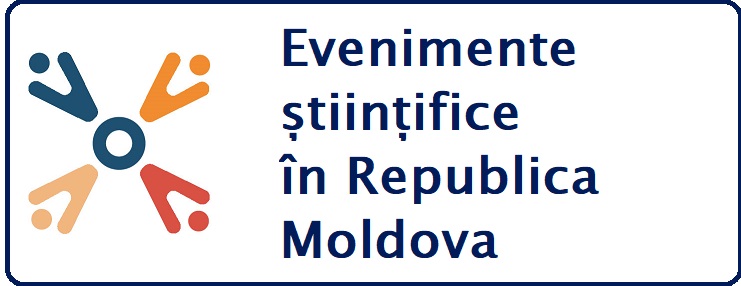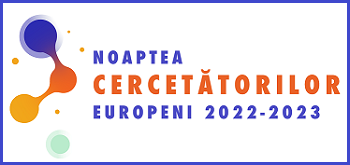| Articolul precedent |
| Articolul urmator |
 |
 335 335 5 5 |
| Ultima descărcare din IBN: 2022-12-24 22:49 |
| Căutarea după subiecte similare conform CZU |
| 579.67:663/664 (3) |
| Прикладная микробиология (368) |
| Микробиологические производства. Бродильные производства. Производство напитков. Производство вкусовых продуктов (594) |
| Пищевая промышленность в целом. Производство и консервирование пищевых продуктов (1475) |
 SM ISO690:2012 SM ISO690:2012COJOCARI, Daniela, STURZA, Rodica, GHENDOV-MOŞANU, Aliona. Microbiostatic effect of bioactive compounds from agro-food industrial wastes on microorganisms causing food spoilage. In: Ecological and environmental chemistry : - 2022, Ed. 7, 3-4 martie 2022, Chișinău. Chisinau: Centrul Editorial-Poligrafic al USM, 2022, Ediția 7, Vol.1, pp. 149-150. ISBN 978-9975-159-07-4.. 10.19261/eec.2022.v1 |
| EXPORT metadate: Google Scholar Crossref CERIF DataCite Dublin Core |
| Ecological and environmental chemistry Ediția 7, Vol.1, 2022 |
|||||||
|
Conferința "Ecological and environmental chemistry 2022" 7, Chișinău, Moldova, 3-4 martie 2022 | |||||||
|
|||||||
| CZU: 579.67:663/664 | |||||||
| Pag. 149-150 | |||||||
|
|||||||
| Rezumat | |||||||
In this research the effect of direct contact of raw materials and agro-food industrial wastes rich in bioactive compounds (polyphenols, carotenoids) on microorganisms that cause food spoilage was evaluated. The aim of the research is to elucidate their microbiostatic action on different types of food matrix. The research methodology included the modelling of food matrices (emulsions, gels, pastes) and the study of the microbiostatic effect of plant extracts in situ and in vitro. The following methods were applied to determine the chemical composition and biochemical transformations of bioactive components from natural sources: physical, chemical and microbiological analysis, UV / dream spectroscopy, HPLC. In this research the effect of direct contact of raw materials and agro-food industrial wastes rich in bioactive compounds (polyphenols, carotenoids) on microorganisms that cause food spoilage was evaluated. The aim of the research is to elucidate their microbiostatic action on different types of food matrix. The research methodology included the modelling of food matrices (emulsions, gels, pastes) and the study of the microbiostatic effect of plant extracts in situ and in vitro. The following methods were applied to determine the chemical composition and biochemical transformations of bioactive components from natural sources: physical, chemical and microbiological analysis, UV / dream spectroscopy, HPLC. |
|||||||
|
DataCite XML Export
<?xml version='1.0' encoding='utf-8'?> <resource xmlns:xsi='http://www.w3.org/2001/XMLSchema-instance' xmlns='http://datacite.org/schema/kernel-3' xsi:schemaLocation='http://datacite.org/schema/kernel-3 http://schema.datacite.org/meta/kernel-3/metadata.xsd'> <identifier identifierType='DOI'>10.19261/eec.2022.v1</identifier> <creators> <creator> <creatorName>Cojocari, D.</creatorName> <affiliation>Universitatea de Stat de Medicină şi Farmacie „Nicolae Testemiţanu“, Moldova, Republica</affiliation> </creator> <creator> <creatorName>Sturza, R.A.</creatorName> <affiliation>Universitatea Tehnică a Moldovei, Moldova, Republica</affiliation> </creator> <creator> <creatorName>Ghendov-Moşanu, A.A.</creatorName> <affiliation>Universitatea Tehnică a Moldovei, Moldova, Republica</affiliation> </creator> </creators> <titles> <title xml:lang='en'>Microbiostatic effect of bioactive compounds from agro-food industrial wastes on microorganisms causing food spoilage</title> </titles> <publisher>Instrumentul Bibliometric National</publisher> <publicationYear>2022</publicationYear> <relatedIdentifier relatedIdentifierType='ISBN' relationType='IsPartOf'>978-9975-159-06-7.</relatedIdentifier> <subjects> <subject schemeURI='http://udcdata.info/' subjectScheme='UDC'>579.67:663/664</subject> </subjects> <dates> <date dateType='Issued'>2022</date> </dates> <resourceType resourceTypeGeneral='Text'>Conference Paper</resourceType> <descriptions> <description xml:lang='en' descriptionType='Abstract'><p>In this research the effect of direct contact of raw materials and agro-food industrial wastes rich in bioactive compounds (polyphenols, carotenoids) on microorganisms that cause food spoilage was evaluated. The aim of the research is to elucidate their microbiostatic action on different types of food matrix. The research methodology included the modelling of food matrices (emulsions, gels, pastes) and the study of the microbiostatic effect of plant extracts in situ and in vitro. The following methods were applied to determine the chemical composition and biochemical transformations of bioactive components from natural sources: physical, chemical and microbiological analysis, UV / dream spectroscopy, HPLC. In this research the effect of direct contact of raw materials and agro-food industrial wastes rich in bioactive compounds (polyphenols, carotenoids) on microorganisms that cause food spoilage was evaluated. The aim of the research is to elucidate their microbiostatic action on different types of food matrix. The research methodology included the modelling of food matrices (emulsions, gels, pastes) and the study of the microbiostatic effect of plant extracts in situ and in vitro. The following methods were applied to determine the chemical composition and biochemical transformations of bioactive components from natural sources: physical, chemical and microbiological analysis, UV / dream spectroscopy, HPLC.</p></description> </descriptions> <formats> <format>application/pdf</format> </formats> </resource>












